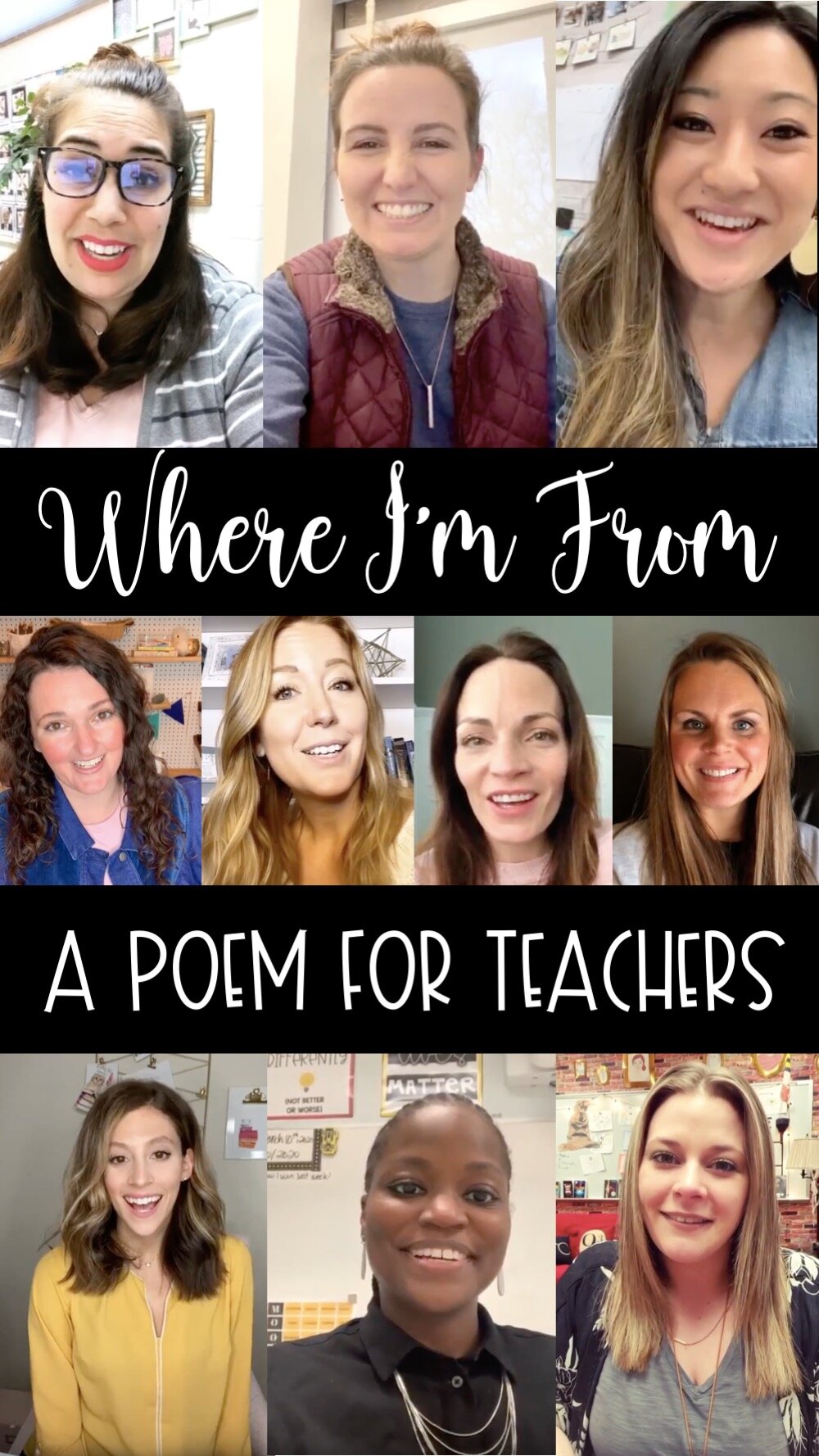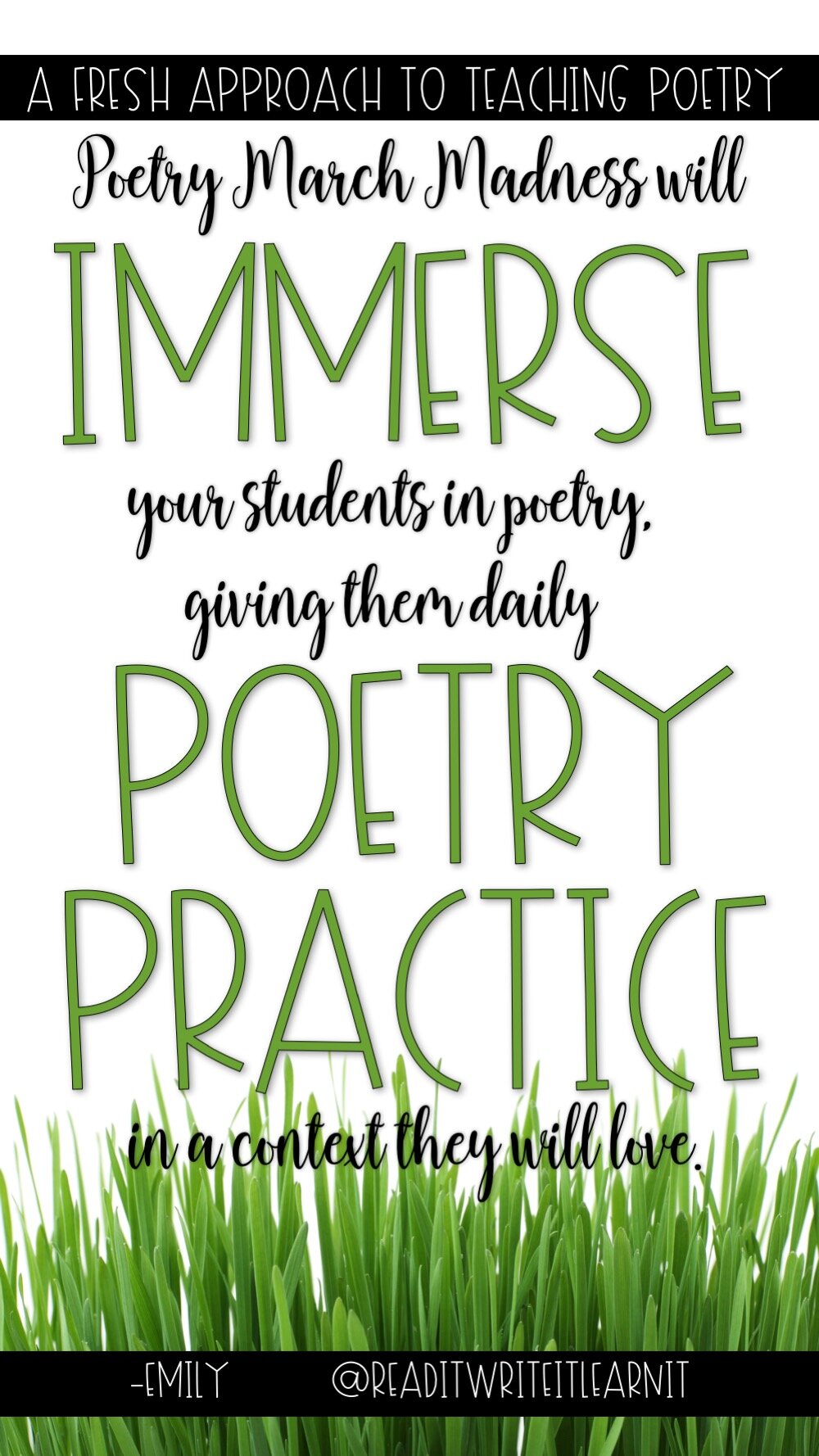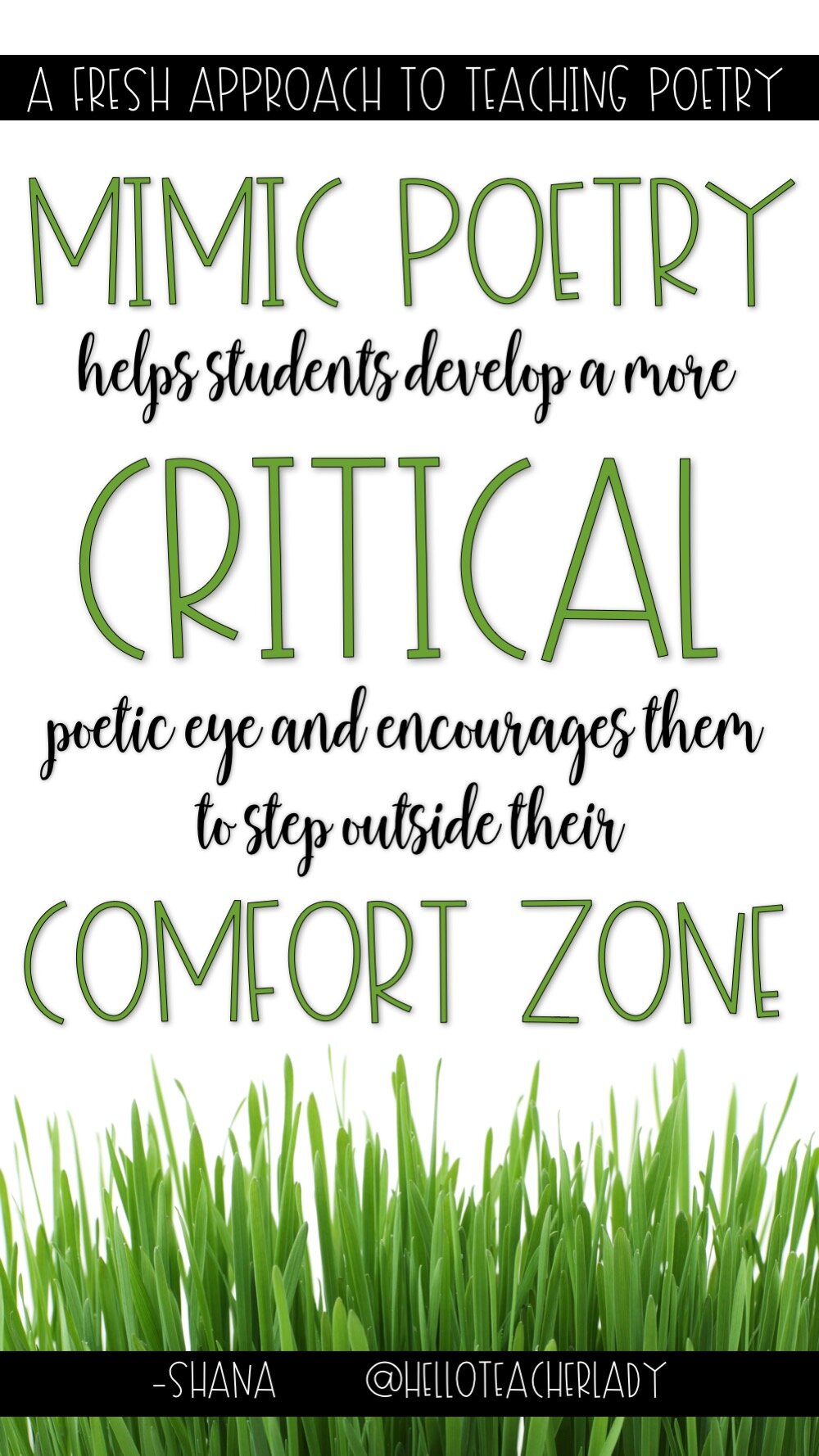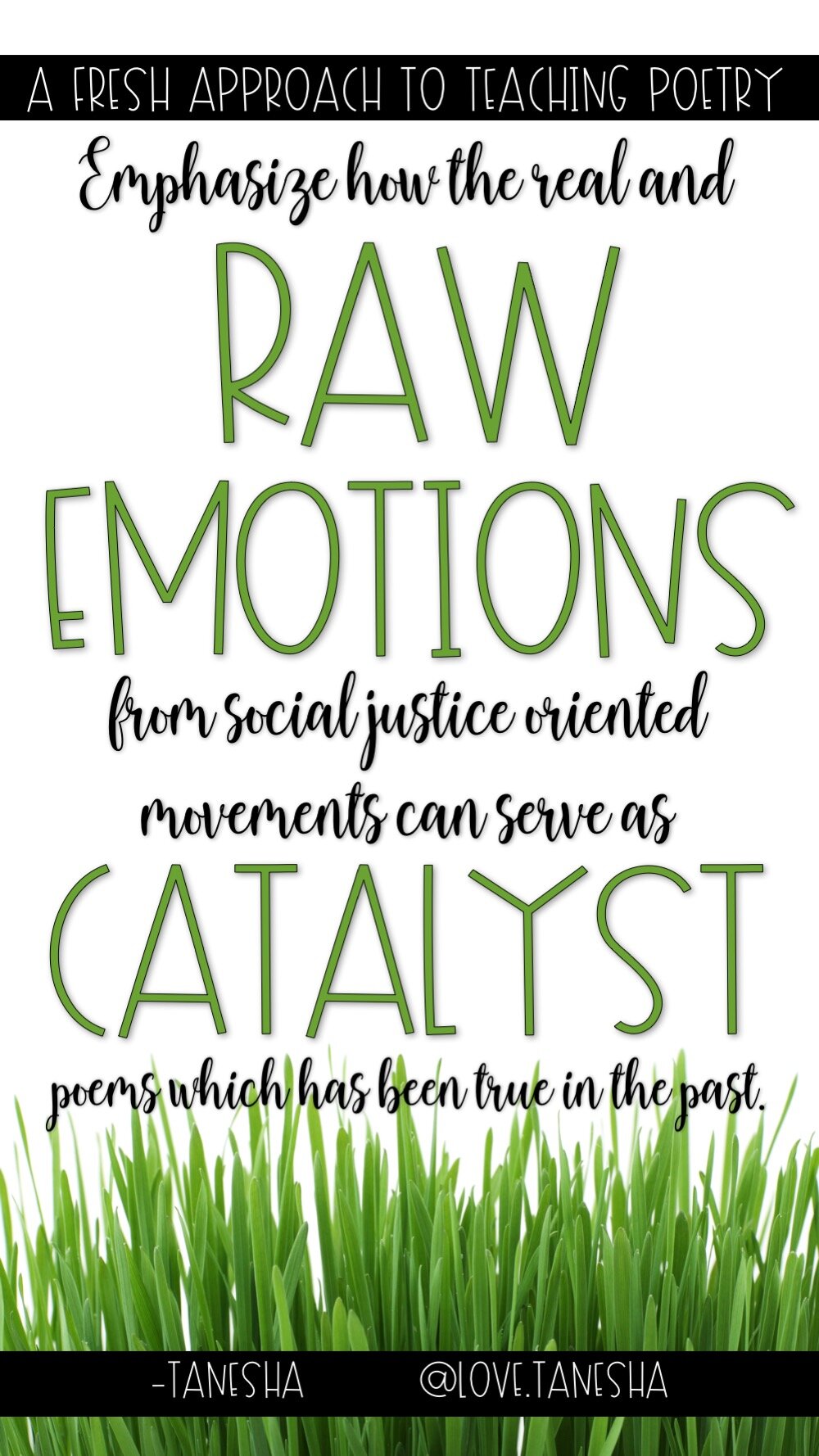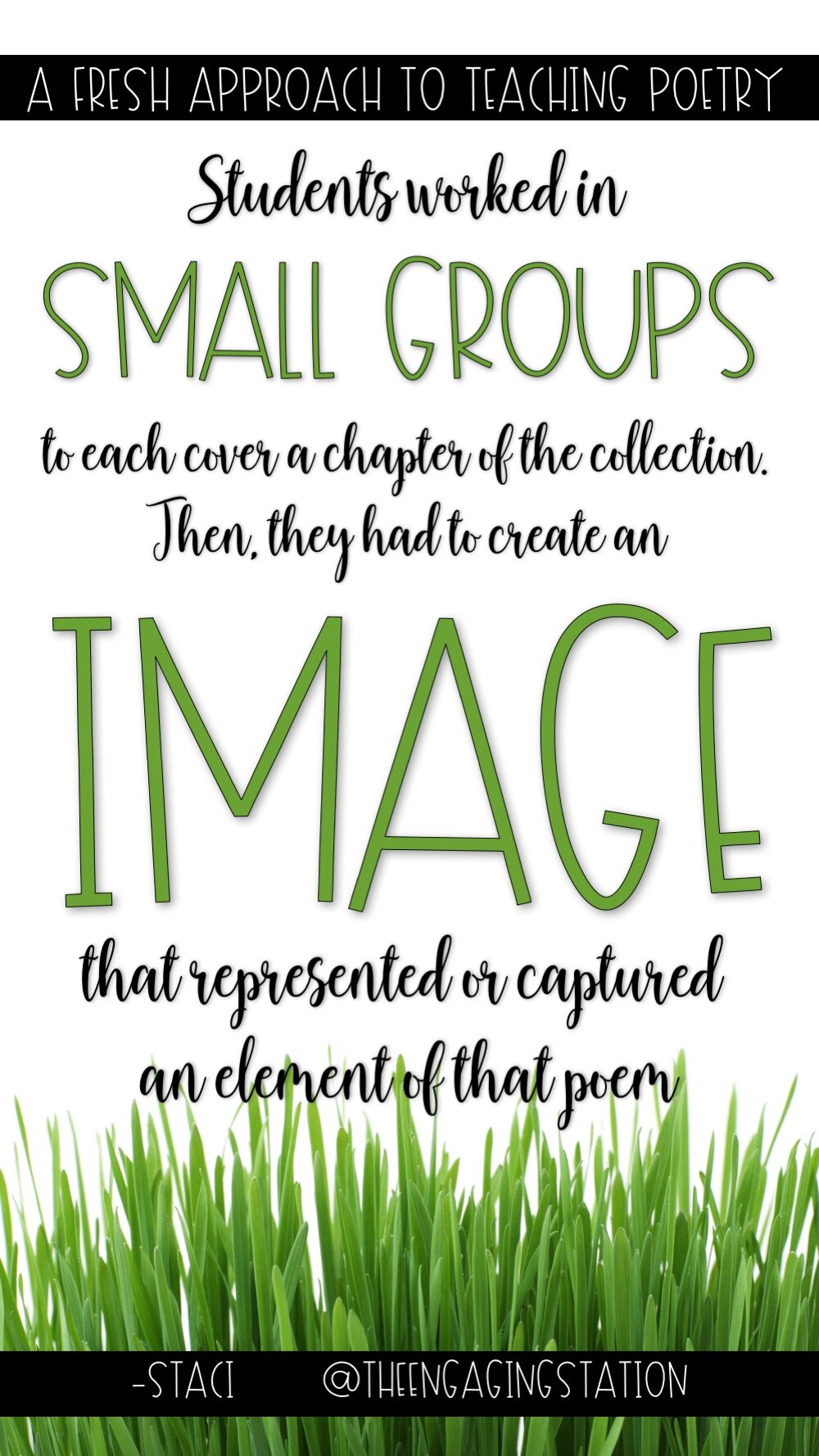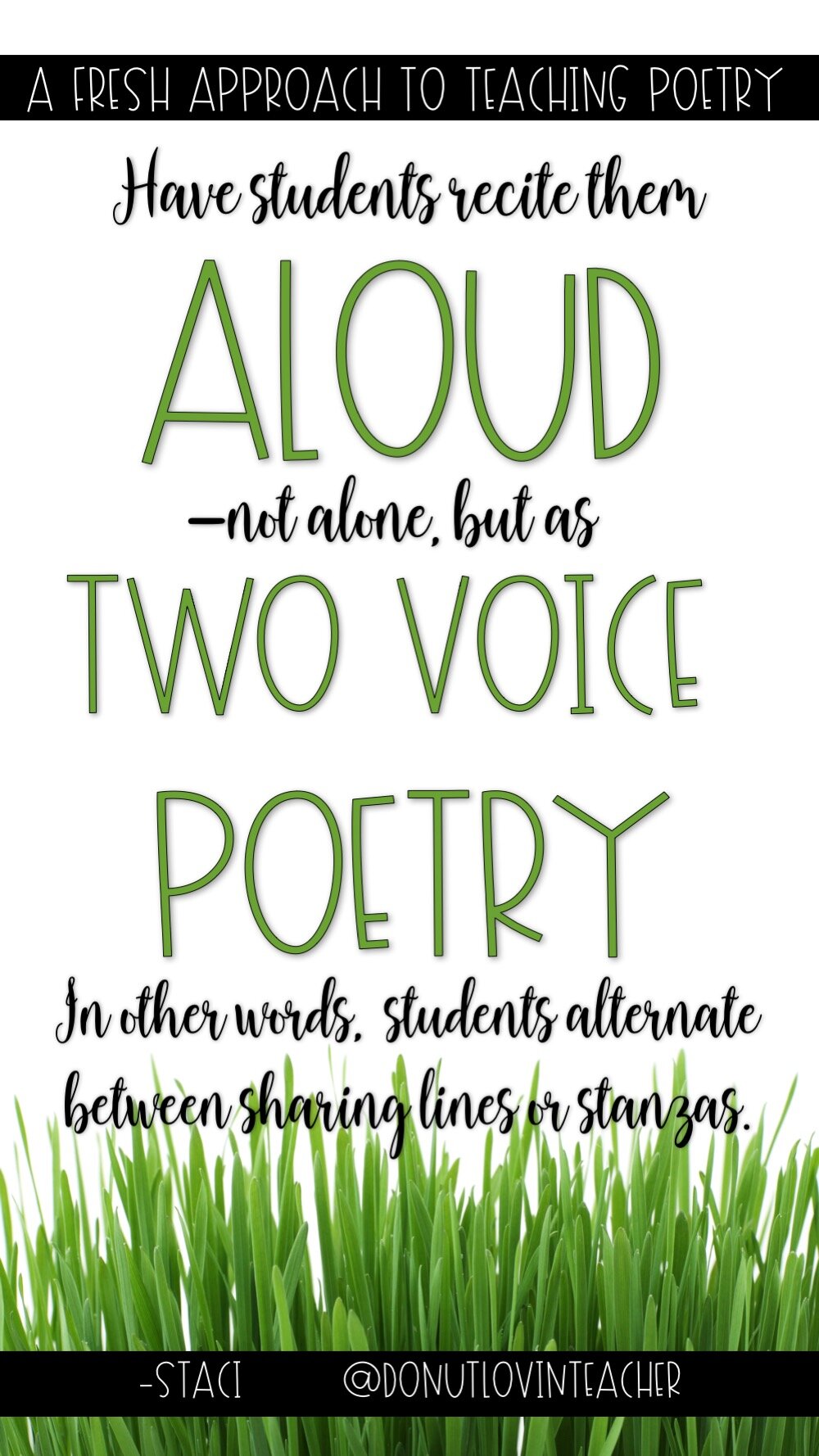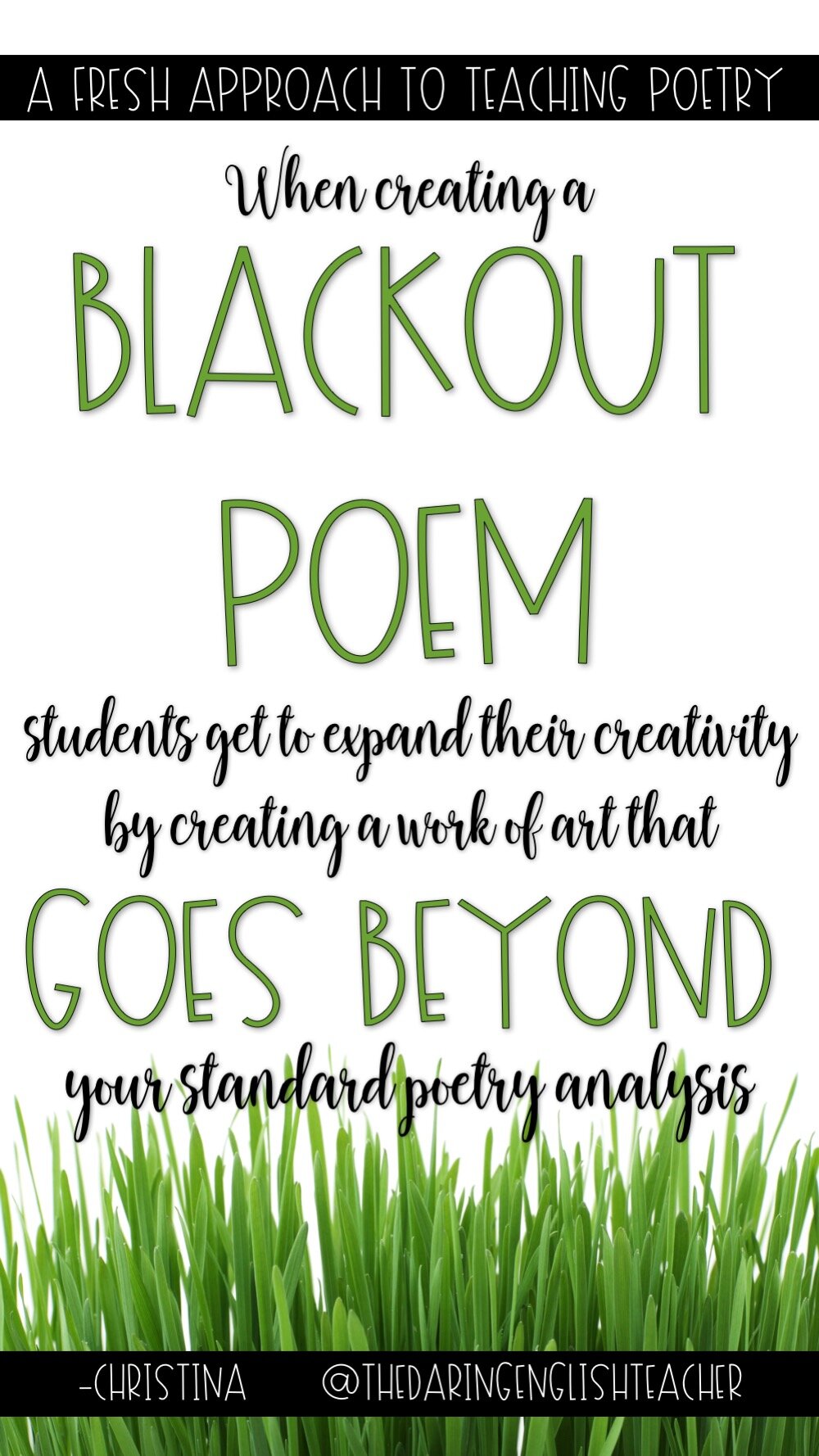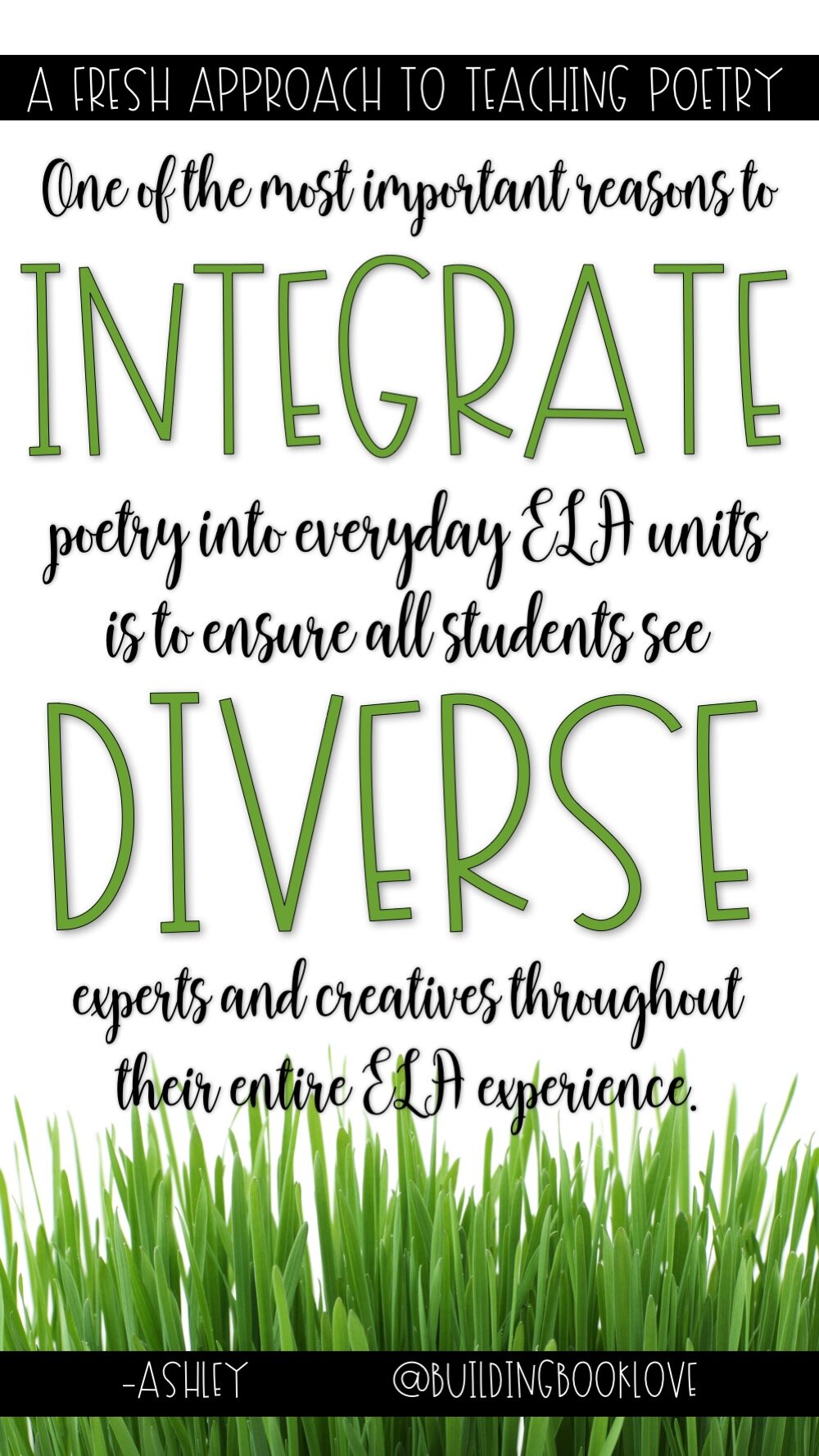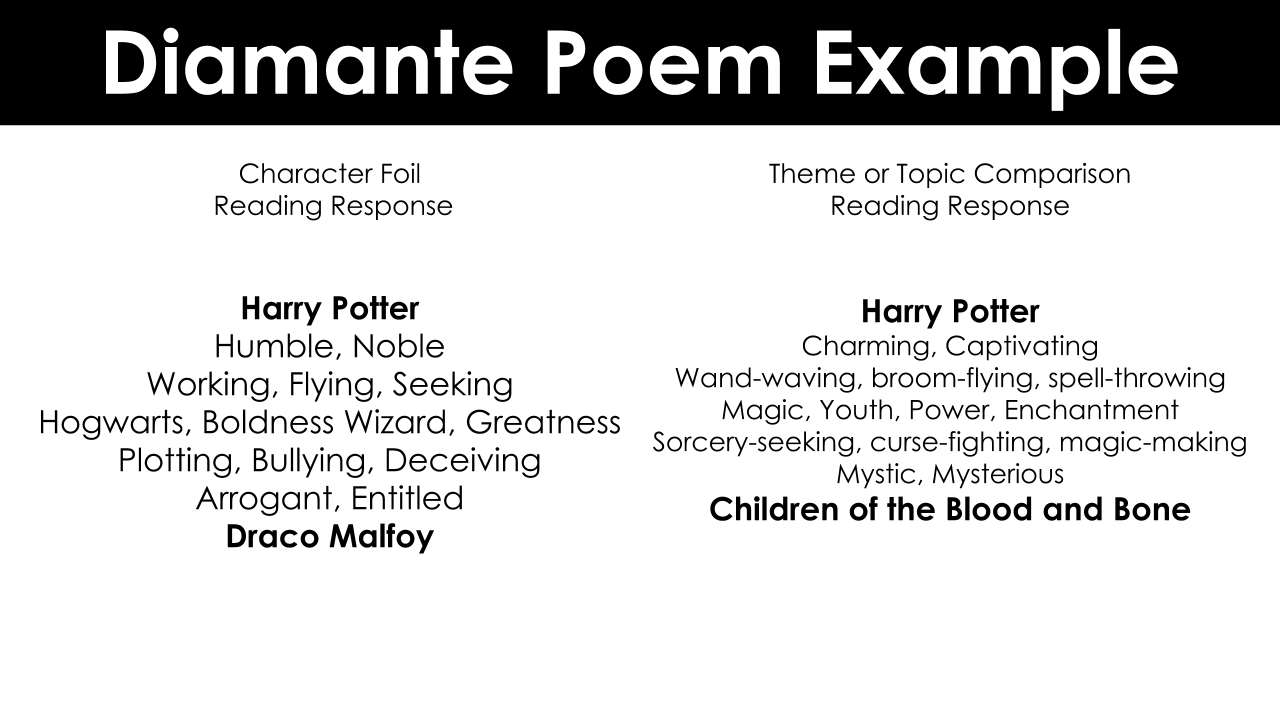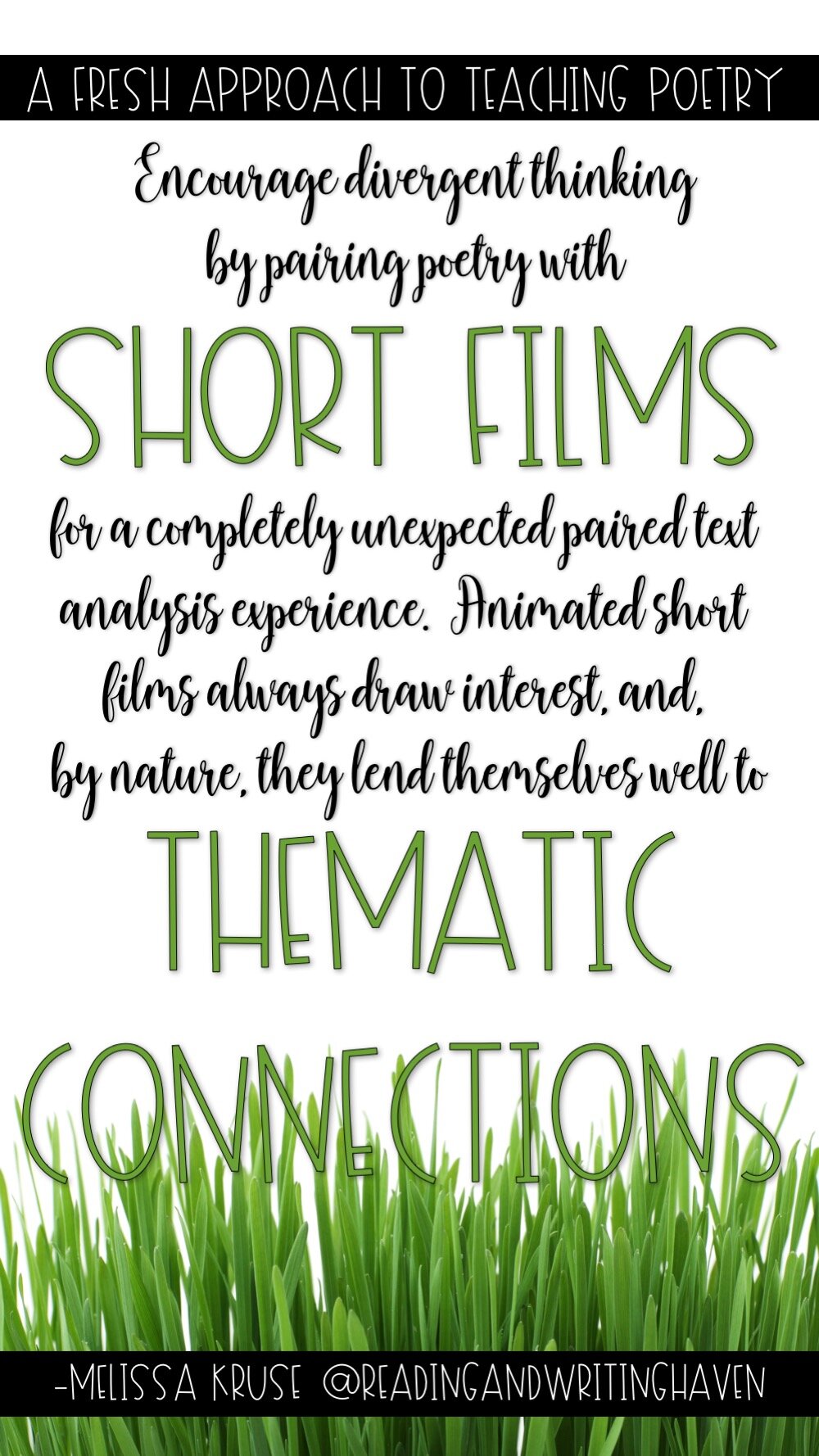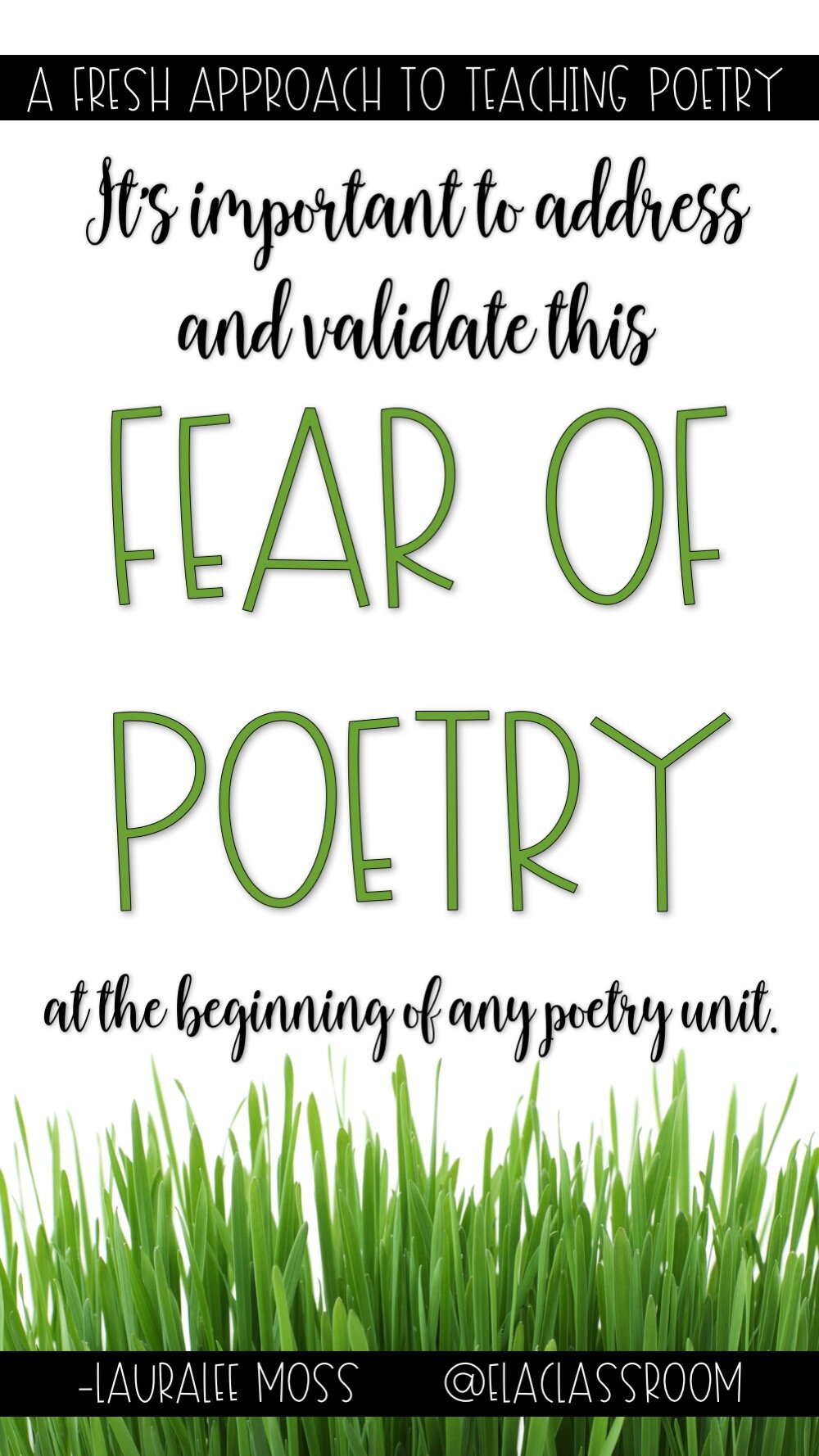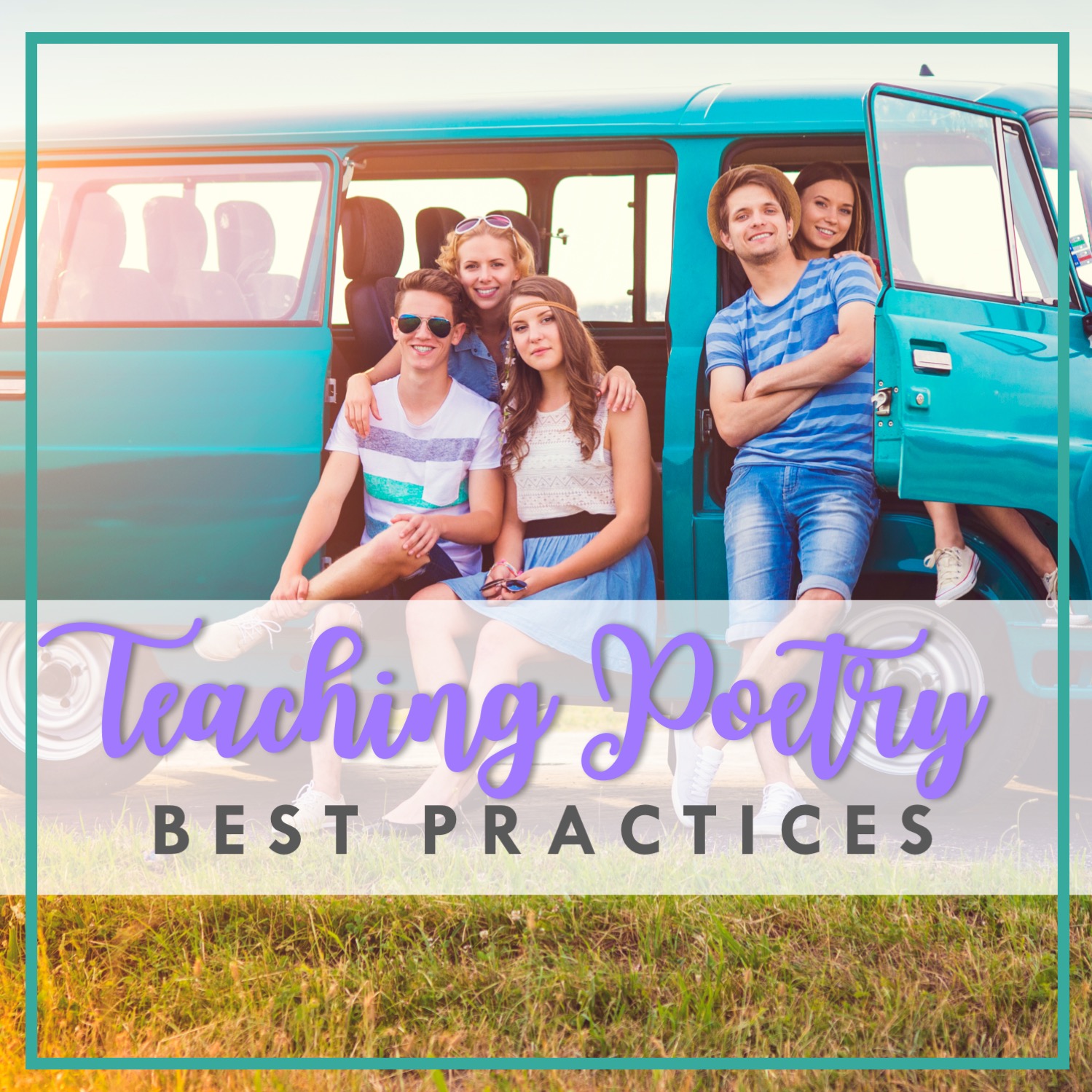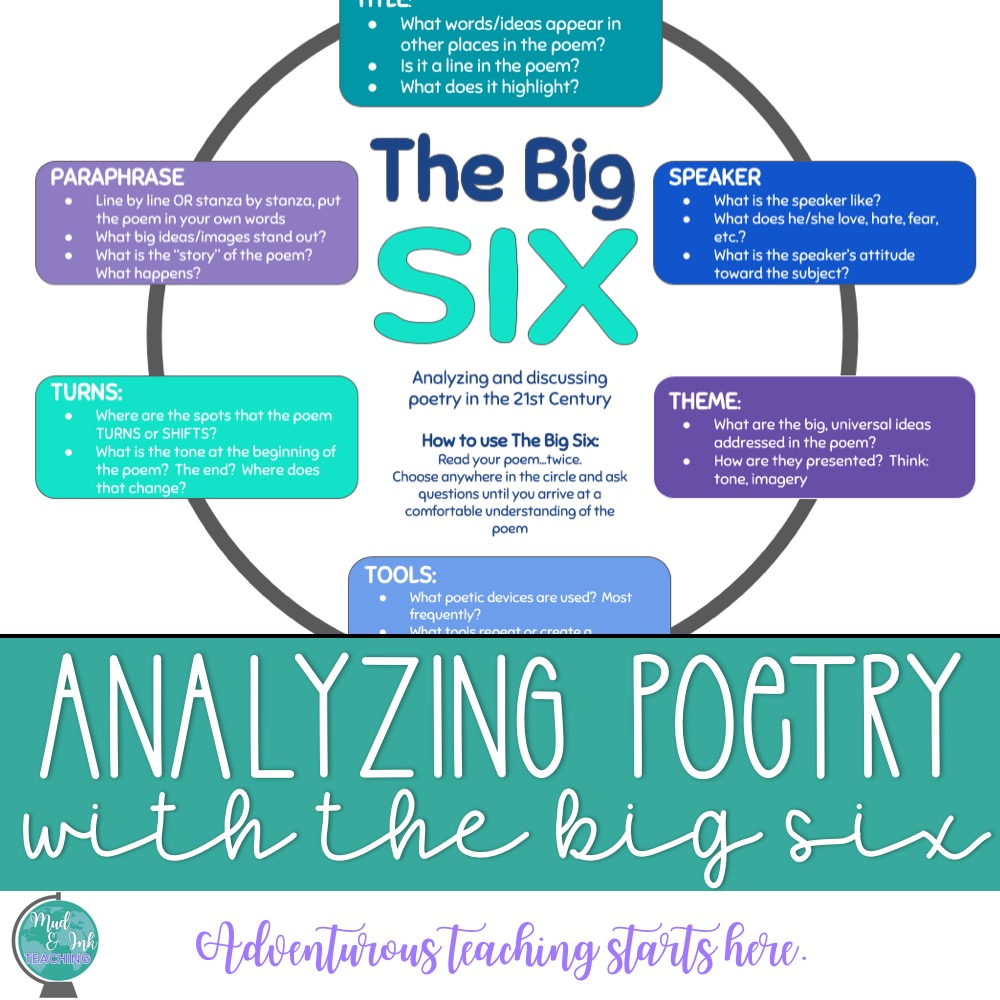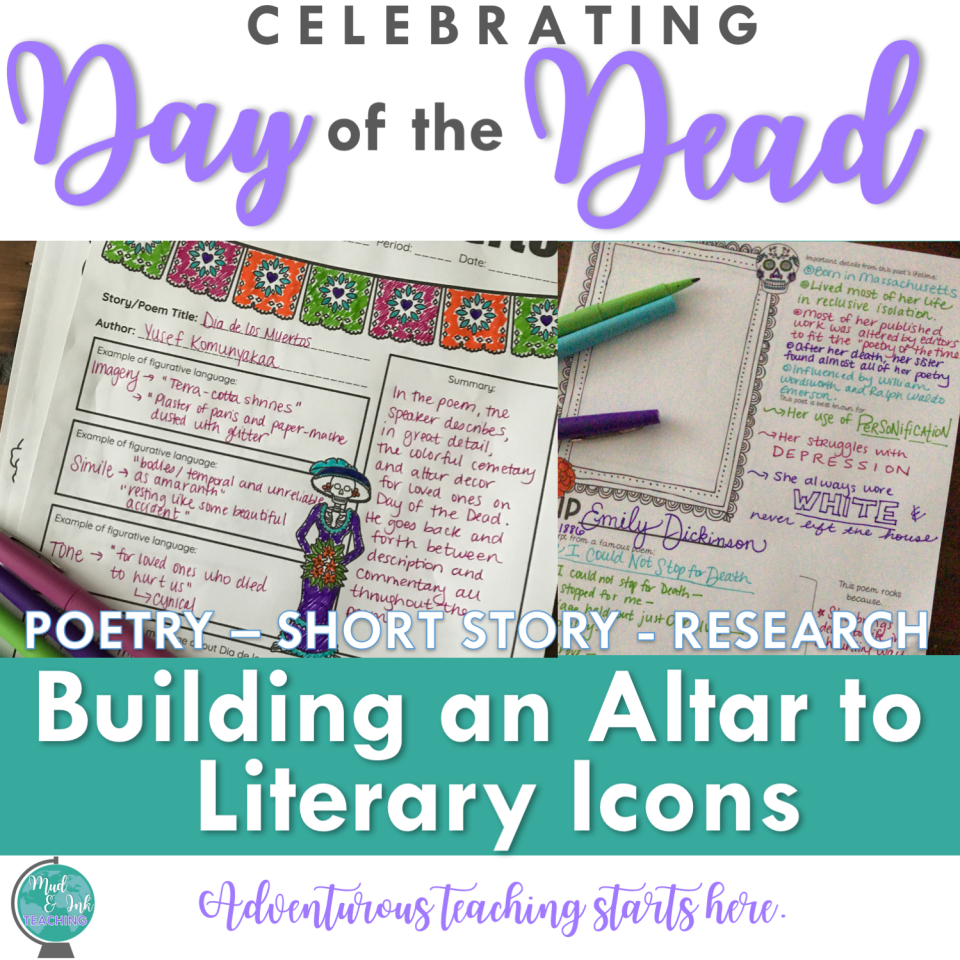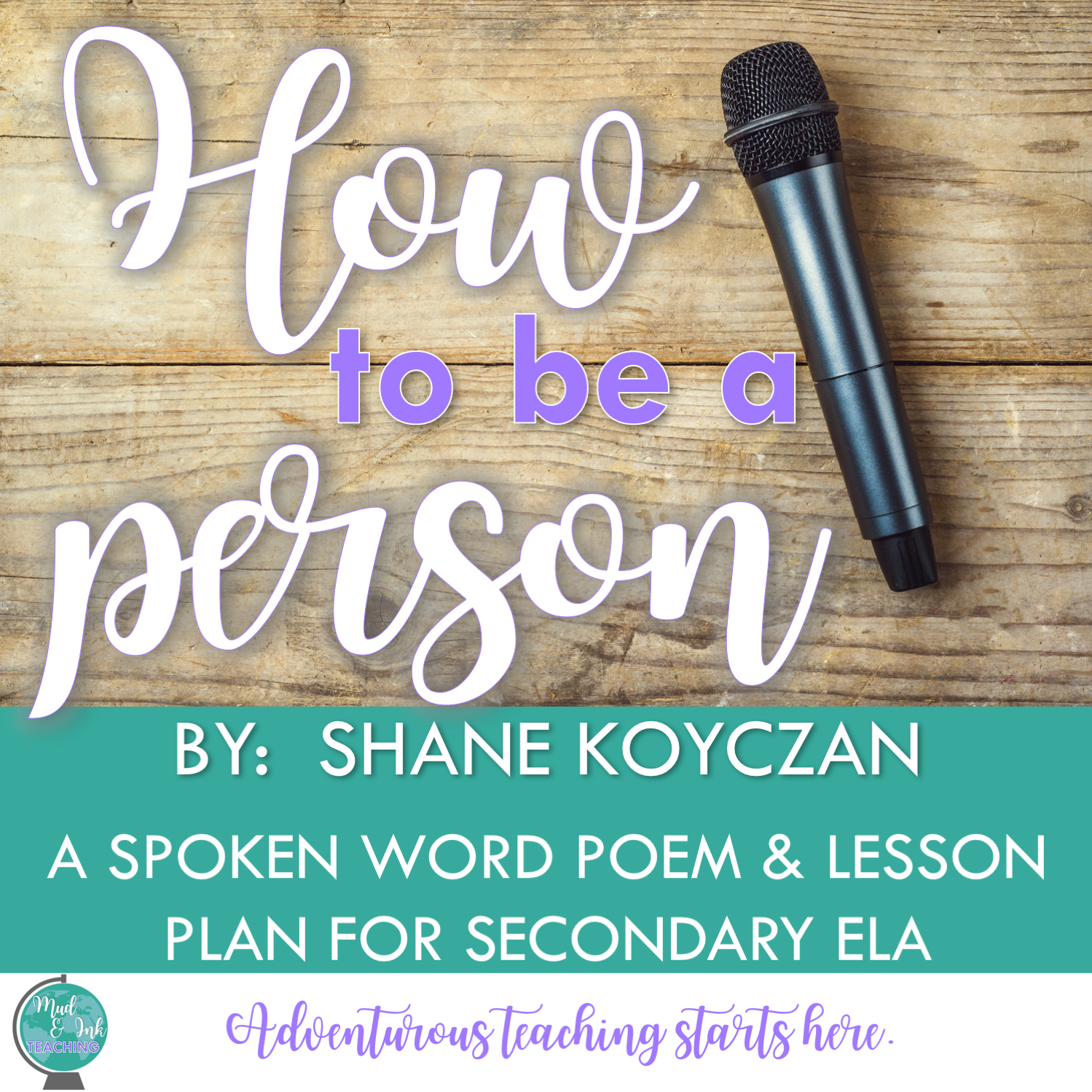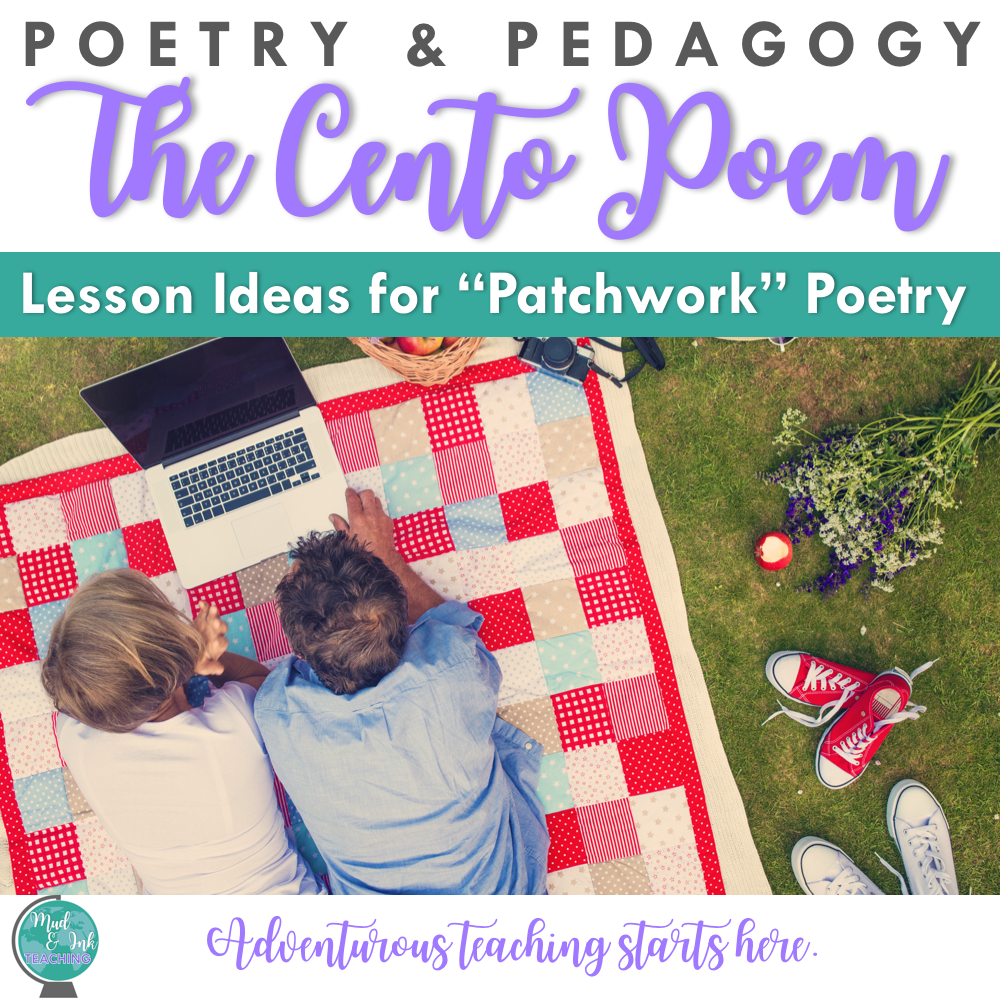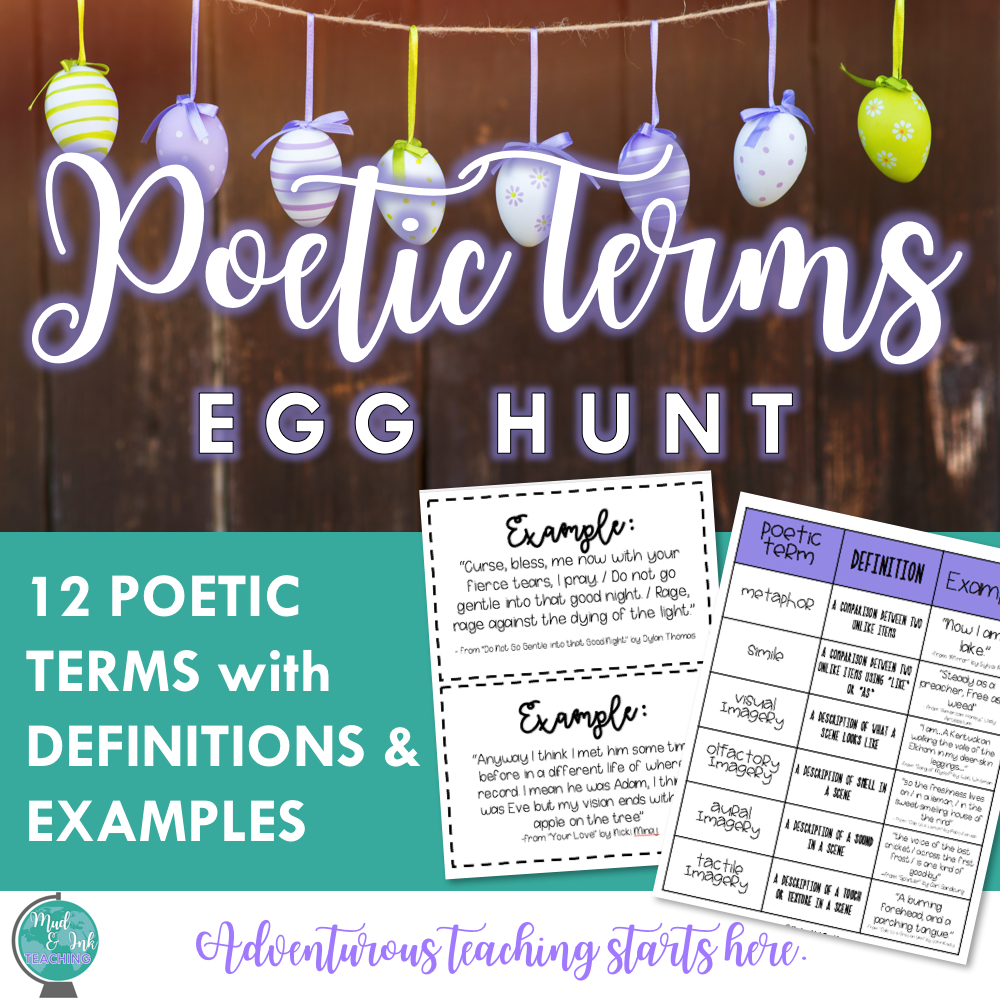12 New Poetry Lesson Plans for Secondary ELA
A Fresh Approach to Teaching Poetry:
12 Ideas to Try During National Poetry Month
When I was in high school, I was already convinced that I had found my life’s passion: becoming an English teacher. It was a no-brainer. My original love for teaching had been planted early in elementary school and only continued to grow as I got older and fell in love with yet another passion: literature and writing. You guys, I took EXTRA English classes in high school because I loved it so much and I even got to “student teach” for a senior lit class when I was a senior. I loved all of it, but looking back, I can still remember that one, dark shadow of doubt that lingered over my shoulder. POETRY. I sucked at poetry (I thought at the time, in those exact, teenage words). How could I ever get an English degree and teach English if I was so bad at poetry? I remember genuinely worrying about my inadequacies and the intimidation of confronting a poem on the page.
I recently took a survey on Instagram asking English teachers about their own fears teaching poetry. A shocking 58% told me that they shy away from teaching poetry because they doubt themselves and their own pedagogical practices. That’s a lot of teachers hanging out in the same boat feeling pretty discouraged about poetry in the classroom.
Luckily for me, I found poetry in college. It called me. The right professor at the right time impacted me in profound ways and poetry became my joy instead of my nightmare. For over a decade of teaching, I have made it my teaching focal point. To me, teaching poetry has become one of the most vital components to my curriculum and every year, it’s also the most memorable. Students remember scenes from novels we’ve read (sometimes), but they ALWAYS remember the poems we read and their experiences with those poems.
I have recently published an eBook to help teachers navigate this experience and I’m so excited to share it wth you! It’s called Teaching Poetry: Pedagogy and Best Practices inn the Secondary ELA Classroom. i’ve outlined tons of philosophy and suggestions for pairing poems with novels, themes, and skills. Check out a preview here!
If you’re not ready for a book, but you are ready to tackle some fresh, new ideas this upcoming National Poetry Month or during other parts of your school year, I gathered together some of the best poetry minds that I know out here in the teacher blogging community. Together, we’ve come up with twelve ideas to try during National Poetry Month and I’m ready to share them with you now!
COLLABORATE
Poetry offers unique opportunities for collaborative exercises in you classroom and online.
1. GROUP POEM VIDEOS
After spending a few years coaching my Louder Than a Bomb spoken word poetry team, I came to love watching, writing, and performing group poems. Pulling them off in the classroom can be difficult, but one fun alternative that I’ve found is to create a group poem VIDEO. First, students in their groups select a theme or choose a poem they’ve read that they’d like to imitate. For me, I like doing something with a pretty open ended structure like a “Where I’m From” poem, inspired by this original piece. Then, each student writes their own stanza. Next, the students read their stanzas and work together to decide how the poem best fits together. Students then record themselves reading their poem, either selfie-facing or filming something that goes along with the content of the poem. Students drop all of their video files into a Google Drive folder and using an easy video editing software (I like WeVideo and Adobe Spark), students stitch together their stanza videos to create a whole, new poem! Have a day set aside to watch and read everyone’s poems -- this is always a wonderful day in my classroom.
Some of my fabulously talented friends here on this blog post helped me out by creating a sample for you. Here is our “Where I’m From” poem, a poem by teachers, for teachers. I hope it inspires you and makes you feel all the silly, warm, tender, and ridiculousness that teaching is all about!
PLAY
All school year long, we take language seriously, but when you dive into poetry, one of the best opportunities that you have is the chance to play! From small language activities to full on lass challenges, take this time to let students enjoy experimenting with language and being playful.
2. POETRY MARCH MADNESS
Want a sure-fire way to engage your middle and high school students in poetry? Try Poetry March Madness. Taking a page from the college basketball playbook, Poetry March Madness is easy to implement, and the competitive sports tie-in will get your students to buy into poetry!
Emily from Read it. Write it. Learn it. suggests starting with a Sweet 16 of poets. The Sweet 16 refers to the final 16 teams in college basketball who battle it out to make it to the Elite Eight, the Final Four, and finally the Championship round where one team is declared the best in College Basketball.
Poetry March Madness works the same way. Choose 16 poets to match up in brackets. Read one match up each day and have your students vote on the poet who will advance forward to the Elite Eight. Once in the Elite Eight, students can read the poems in new match ups to see who advances to the Final Four. Continue rereading poems and peeling back layers of meaning as poets enter new match ups and the champion poet is crowned!
The best part of Poetry March Madness is that it motivates students to deeply analyze poetry in a non-threatening, low-stakes context. Emily asks her students to rate poets on four categories: meaning and themes, form and structure, language, and mood. As students are examining poems and choosing the poet who will advance, they’re really participating in a higher level analysis of the poems. Students are also learning how to read poetry. When Emily kicks off March Madness, she spends the first few days modeling and teaching her students how to read poetry: students read poems more than once, the first time for the gist, the second time to begin peeling back the layers. They complete additional readings, annotating and working to unpack even more meaning.
Poetry March Madness will immerse your students in poetry, giving them daily poetry practice in a context they will love. Emily shares her best tips for implementing Poetry March Madness on her blog along with suggested match ups. Check it out here.
3. MIMIC POETRY
Another fun way to celebrate National Poetry Month is with mimic poetry, says Shana Ramin from Hello, Teacher Lady. Much like it sounds, the goal of mimic poetry is to intentionally imitate the structure and style of an already-established poem. It’s a super simple, low-prep activity that can easily stand alone or complement an existing unit.
Not only can mimic poetry help students develop a more critical poetic eye, but it can also encourage them to step outside their comfort zones in terms of writing. In Shana’s experience, the low-stakes nature of mimic poetry can be especially helpful for students who may feel nervous about, or even averse to, the idea of writing their own poems.
To create a mimic poem, students begin by performing a close read of their mentor poem — making note of specific elements such as stanzas, line breaks, rhyming patterns, and syllable count. Once students have a firm grasp on their mentor poem’s structure and style, they can begin brainstorming ideas for their own. Shana recommends creating a collaborative poem as a class first, especially if your students don’t have a ton of experience analyzing or writing poetry yet.
While just about any mentor poem can be used for this, Shana loves to kick off the month with “April Rain Song” by Langston Hughes. It’s short and sweet, but packed with tons of literary and poetic devices.
DIG
Another way to approach poetry this April is to think about the opportunities it affords us to DIG into deeper thematic subjects and even get acquainted with a wider diversity of authors. We can’t read an entire globe’s worth of novels in one school year, but we certainly can dig into more culture and more experiences with poems. Poetry offers layers of understanding and chances for students to work in small groups, digging together to find their own shades of truth. Take a look!
4. CONNECT TO SOCIAL JUSTICE
Tanesha from Love Tanesha uses poetry to engage students in social justice issues. While she usually aligns this unit with National Poetry Month, this idea can be used at any point in the year. The concept of freedom extends beyond the topic of a given poem. Poetry is the language of the free that liberates students from the confines of other genres.
Tanesha starts the unit by discussing key terms and concepts that will provide students access to analyzing and creating poems that connect to social justice. She starts with defining the terms justice, injustice, equity, power, and racism. She holds space for students to share examples from events either past or present that have centered on justice. Note: This is a heavy content area that teachers should unpack for themselves and provide boundaries for discussion. In the spirit of poetry being a free art form, Tanesha emphasizes how the real and raw emotions from social justice oriented movements can serve as catalyst poems which has been true in the past. Additionally, students might have experienced some form of injustice, so be mindful and plan accordingly.
The second component invites students to engage with a poem using a social justice lens. For the last component, students complete a free write as a start to creating their own social justice poem. Teachers can increase requirements by having students incorporate elements of poetry in their writing.
This is a multi-layered activity that creates a beautiful bond between poetic analysis, inspiration, and creation. Check out this post with more specifics on the activity.
5. USE A VARIETY OF AUTHORS
Poetry is beautiful and engaging, but some students might find the concepts intimidating. Lauralee from ELA Classroom admits, “Poetry once intimidated me, and I don’t want students to feel overwhelmed with poetry. To begin lessons, I front load information. I cover definitions and examples through videos, textbooks, and songs. Before we begin actual poems, I send out a simple Google Form that asks students to gauge where they are in their understanding. If students are confused, I will try a more straight-forward approach. If students simply have a few questions, I will provide targeted practice or examples.”
She then says it’s time to dive into poetry together. With younger students who maybe have not read much poetry, Lauralee suggests using a variety of authors to illustrate common poetic devices. With older students, ask them to find the poetry for the class. Students can then submit poems, the teacher reads through them, and then as a class, complete graphic organizers or one-pagers and study them together.
Because many poems are short, poetry lends itself to station work. Students interact with each other, and teachers can rotate to clarify confusion. With longer poems, you could jigsaw the pieces and ask students to present their analyses. Teaching poetry for the first time can be intimidating, but by providing various learning opportunities and asking for student feedback, you will reach all students.
6. POETRY COMIC STRIPS
Staci Lamb from The Engaging Station loves all things poetry, especially living poets. This year, she had the opportunity to read a collection of poetry by Alakkuu (@alakkuu), a poet from Washington D.C., and he even offered to come perform for the students for free!
Her student teacher had a great idea for working with the poems. His collection, wet grass vanilla, details the experiences of love and heartbreak, and all that happens in between.
Students worked in small groups to each cover a chapter of the collection. Then, they had to create an image that represented or captured an element of that poem. They had to cite at least one line from the poem in their drawing and focus on the strategies that Alakkuu used in his work. In the end, each group created what looked like comic strips that detailed the progression of the relationship.
Want to see some amazing examples and slides from the lesson? Check out this Instagram post! . his idea helps students process the poetry, analyze the strategies, work collaboratively, create visual representations of the poems! :)
CREATE
All too often, we are convinced that poetry needs to be in the curriculum for analysis purposes. Think again! Poetry is a wonderful mentor text for all kinds of writing skills, and allowing students the chance to create something new with language. Here are some great ideas for getting students out of the analysis seat and into the driver’s seat, instead.
7. TWO-VOICE WHERE I’M FROM POETRY
Where I’m From poems can be a great addition to your classroom! They require the writer to reflect on important sayings, foods, and family traditions that are important to who they are. Have your students begin brainstorming with an Identity Web where they can capture personal qualities, people that have influenced them, and places that are special. Then, using a template like this or their own style, students can craft their very own Where I’m From poem. If your students have already written a Where I’m From poem, have them take on the perspective of a character from a book you’re reading!
Staci over at Donut Lovin’ Teacher loves Where I’m From poems and even has her students add an extra layer to these already awesome poems. She has students recite them aloud--not alone, but as two voice poetry. In other words, students alternate between sharing lines or stanzas. Hearing the shift in student voice is extremely powerful and helps to highlight similarities as well as unique qualities! Click here to read her full post on two voice poetry.
8. BLACKOUT POETRY
One way that Christina, The Daring English Teacher, loves to incorporate creativity and excitement into her poetry unit is by assigning students a blackout poetry project.
Blackout poetry has quite a few benefits for students. First, it provides students with an opportunity to do some close reading. Afterall, your students will need to read the passage to find specific words that jump out. Secondly, when creating a blackout poem, students get to expand their creativity by creating a work of art that goes beyond your standard poetry analysis.
An easy way to incorporate blackout poetry into any novel unit you are currently working on is to spend a day or two with some photocopied pages of the novel. Teachers can also require that the blackout poem be related to the central idea or theme of the text.
9. DIAMANTE POEMS
Ashley Bible of Building Book Love believes that National Poetry Month should be treated like Black History Month, Women’s History Month, Native American Heritage Month, and the like in that the poetry activities you use this month should be for extra celebration rather than a single month use. In fact, one of the most important reasons to integrate poetry into every ELA unit is to ensure ALL students see diverse experts and creatives throughout their entire ELA experience. Because of their short, powerful, rich, and diverse nature, poems provide the perfect opportunity to pair classic literature with contemporary voices. Ashley lists and explains several creative ways to integrate poetry by embedding it into your ELA curriculum in this post: Teaching Poetry within Curriculum Context ,but for one quick idea, here is an example. Instead of assigning students to write a traditional compare or contrast reading response, have them create a Diamante Poem to show what they know.
A Diamante Poem follows an exact pattern and can be used for either synonyms (compare or explain) or antonyms (compare and contrast). It was invented by female author, Iris McClellan Tiedt in 1969, and its name is Italian for “diamond.” A Diamante Poem is 7 lines long and follows this pattern:
Noun
Adjective, Adjective
Verb, Verb, Verb
Noun, Noun, Noun, Noun
Verb, Verb, Verb
Adjective, Adjective
Noun
Here are two examples to spark ideas for how you can use this poetry activity instead of a traditional reading response.
You can find several other poetry activity ideas here: Teaching Poetry within Curriculum Context
REACH
A fresh way to think about poetry in your curriculum is to consider the ways in which it reaches across subjects, time periods, music, and even film. Here are three ideas to help you use poetry to make connections.
10. MUSIC & POETRY
Our students are so connected to their music (just one scan around the classroom and you’ll likely see AirPods and Beats blasting music), yet when we bring up poetry, they often fail to see the connection. That’s why Jenna from Doc Cop Teaching emphasizes the connection between music and poetry with task cards or learning stations.
Here are some question ideas to get you started:
What type of figurative language is used, and what is the effect?
What type of sound devices (e.g. repetition, alliteration, consonance, assonance, rhyme, etc.)are used, and what is the effect?
What influenced the author to write this song?
What personal connections do you have to this song?
What type of imagery is used, and what is the effect?
Using this activity is a great starter so students can explore the connection between lyrics and poetry for themselves and not just take your word for it. Students can play their songs and share their analyses as an extension.Music is only one connection that we can use to channel our students interests.
Jenna has five other poetry ideas here.
11. DIVERGENT THINKING WITH POETRY ANALYSIS
Students always seem to be more engaged when you throw an unexpected element into the learning process. With poetry, Melissa from Reading and Writing Haven does this in a couple different ways.
One strategy is to have students analyze poetry through the lens of music. Using a metaphor - a sound equalizer - students color code and visually map the tone and mood throughout a poem. It’s engaging and leads to deeper understanding of how the poet’s unique style impacts the reader.
The second way Melissa encourages divergent thinking is by pairing poetry with short films for a completely unexpected paired text analysis experience. Animated short films always draw interest, and, by nature, they lend themselves well to thematic connections. This list of five poems and short film pairings will save you time getting started!
12. OPENING WITH SCAFFOLDING
Poetry can be tough to teach, and it’s no secret that many students come to us claiming to *gasp* “hate” it. While this can feel discouraging for any poetry fan, it’s important to address and validate this fear of poetry at the beginning of any poetry unit. That’s why Abby from Write on With Miss G likes to give her students the chance to discuss their feelings toward poetry. She encourages her students to get their feelings out while assuring them she will not be offended as an English teacher. Accepting these loaded feelings is much more productive than trudging through a poetry unit annoyed at students’ attitudes. Ultimately, these feelings and discussions are very helpful in pinpointing why students dislike poetry, where they may struggle, how to scaffold, and what you can do to engage students.
After listening to students’ concerns, Abby likes to start her poetry unit with lots of scaffolding (like this “how to read a poem” brochure) and high engagement (with activities like this poetic devices question trail or this poetry escape room).
Validating students’ fears, providing support, and adding in engagement will go a long way in making sure your poetry unit reaches all students (even the ones who “hate” poetry).
BONUS 13. PERSONA POEMS FOR ANY SUBJECT
A persona poem is the perfect poem type to use when you need to reach different time periods, different subjects, or different areas of the learning outside of English. Essentially, in a persona poem, students assume the PERSONA of a person or object other than themselves.
When teaching OMAM (which I will affectionately be using as a nickname for Of Mice and Men from here on out), it’s critical that we provide students with some context about the time, place, and economic circumstances in the 20s and 30s. Find an opportunity to allow students to browse some of Dorothea Lange’s famous photography and take note of the circumstances, emotions, and tone of the photographs.
With their notes, introduce students to PERSONA poetry: poetry written in the voice (or persona) of someone other than the poet himself. Have students write a 20 line poem taking on the persona of one of the people (or a collection of people) that struck them in the photographs. This is a very cool way to start pretty much any unit that has relevant contextual background photography possibilities, so feel free to repeat all year long!
For more poetry activities that reach different areas of your classroom, be sure to grab a copy of my eBook!
